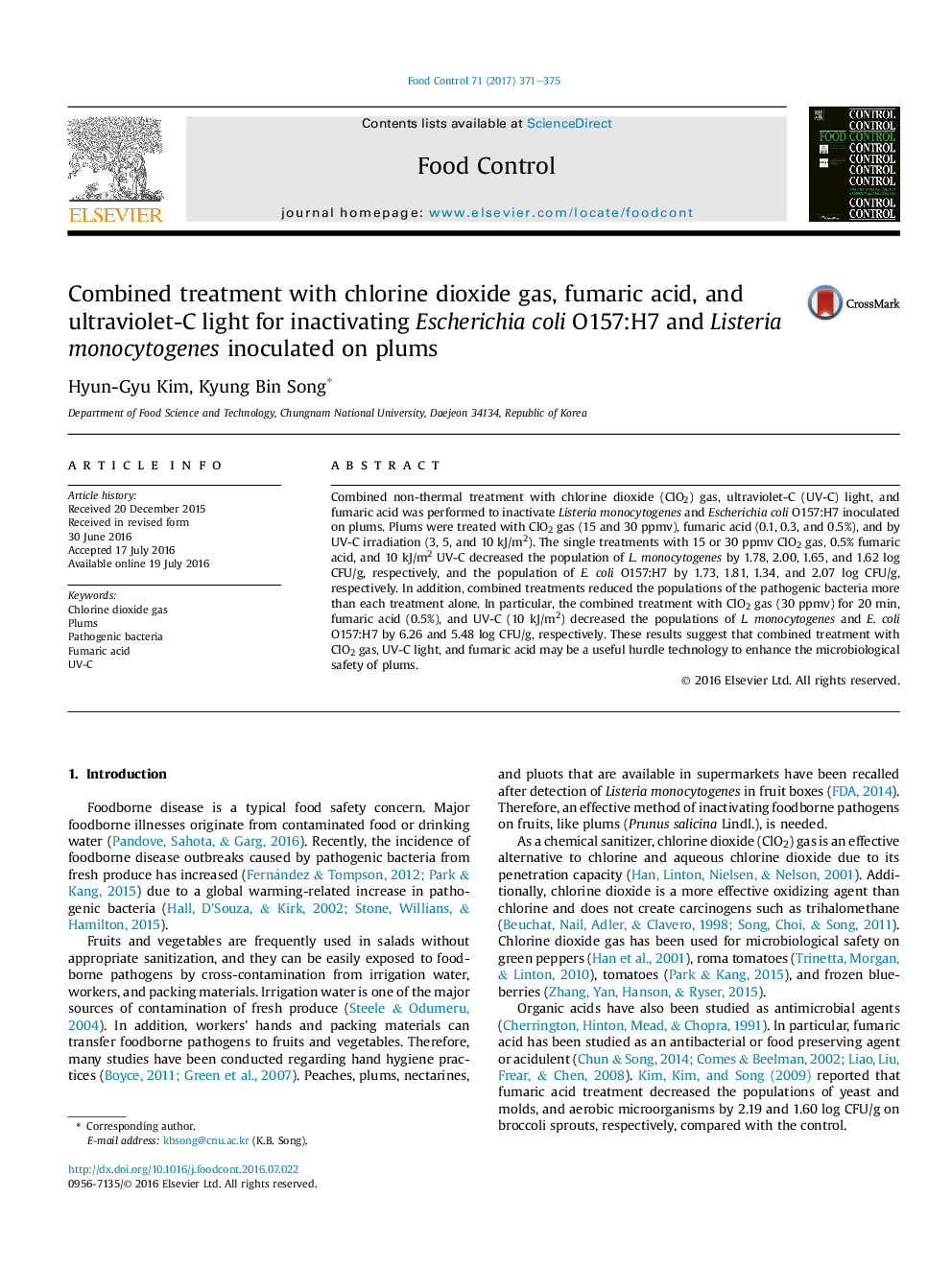| Article ID | Journal | Published Year | Pages | File Type |
|---|---|---|---|---|
| 6389987 | Food Control | 2017 | 5 Pages |
â¢Plums were treated by chlorine dioxide gas, fumaric acid, and UV-C.â¢Chlorine dioxide gas was a suitable treatment to disinfect the fruits.â¢Combined treatment had a synergy effect to inactivate pathogenic bacteria.
Combined non-thermal treatment with chlorine dioxide (ClO2) gas, ultraviolet-C (UV-C) light, and fumaric acid was performed to inactivate Listeria monocytogenes and Escherichia coli O157:H7 inoculated on plums. Plums were treated with ClO2 gas (15 and 30 ppmv), fumaric acid (0.1, 0.3, and 0.5%), and by UV-C irradiation (3, 5, and 10 kJ/m2). The single treatments with 15 or 30 ppmv ClO2 gas, 0.5% fumaric acid, and 10 kJ/m2 UV-C decreased the population of L. monocytogenes by 1.78, 2.00, 1.65, and 1.62 log CFU/g, respectively, and the population of E. coli O157:H7 by 1.73, 1.81, 1.34, and 2.07 log CFU/g, respectively. In addition, combined treatments reduced the populations of the pathogenic bacteria more than each treatment alone. In particular, the combined treatment with ClO2 gas (30 ppmv) for 20 min, fumaric acid (0.5%), and UV-C (10 kJ/m2) decreased the populations of L. monocytogenes and E. coli O157:H7 by 6.26 and 5.48 log CFU/g, respectively. These results suggest that combined treatment with ClO2 gas, UV-C light, and fumaric acid may be a useful hurdle technology to enhance the microbiological safety of plums.
